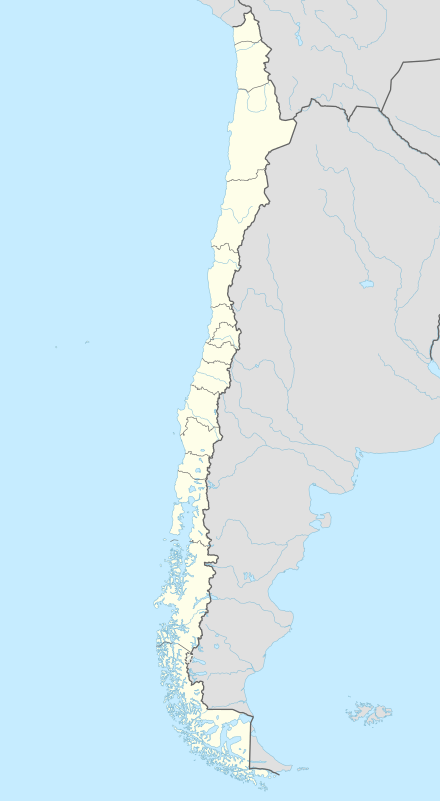Paine, Chile
| Paine | ||||||
|---|---|---|---|---|---|---|
| City and Commune | ||||||
|
| ||||||
| ||||||
| Coordinates (city): 33°49′S 70°45′W / 33.817°S 70.750°WCoordinates: 33°49′S 70°45′W / 33.817°S 70.750°W | ||||||
| Country | Chile | |||||
| Region | Santiago Metro. | |||||
| Province | Maipo | |||||
| Founded | 1927 | |||||
| Government[1] | ||||||
| • Type | Municipality | |||||
| • Alcalde | Diego Vergara Rodríguez (RN) | |||||
| Area[2] | ||||||
| • Total | 678 km2 (262 sq mi) | |||||
| Elevation | 409 m (1,342 ft) | |||||
| Population (2002 Census)[2] | ||||||
| • Total | 50,028 | |||||
| • Density | 74/km2 (190/sq mi) | |||||
| • Urban | 31,622 | |||||
| • Rural | 18,406 | |||||
| Demonym(s) | Painino | |||||
| Sex[2] | ||||||
| • Men | 25,571 | |||||
| • Women | 24,457 | |||||
| Time zone | CLT [3] (UTC-4) | |||||
| • Summer (DST) | CLST [4] (UTC-3) | |||||
| Area code(s) | 56 + | |||||
| Website | Municipality of Paine | |||||
Paine is a Chilean city, forming part of Greater Santiago, and a commune in the Maipo Province, Santiago Metropolitan Region.
Demographics
According to the 2002 census of the National Statistics Institute, Paine spans an area of 678 km2 (262 sq mi) and has 50,028 inhabitants (25,571 men and 24,457 women). Of these, 31,622 (63.2%) lived in urban areas and 18,406 (36.8%) in rural areas. The population grew by 33.3% (12,499 persons) between the 1992 and 2002 censuses.[2]
Administration
As a commune, Paine is a third-level administrative division of Chile administered by a municipal council, headed by an alcalde who is directly elected every four years. The 2012-2016 alcalde is Diego Vergara Rodríguez (RN).[1] The communal council has the following members:
- Patricio Achurra Garfias (PDC)
- Maximiliano Bernstein Llona (UDI)
- Juan Maureira Carreño (PPD)
- Luis Canales Canales (RN)
- Mario Campo Arias (IND)
- Bárbara Kast Sommerhoff (UDI)
Within the electoral divisions of Chile, Paine is represented in the Chamber of Deputies by Ramón Farías (PPD) and Mr. José Antonio Kast (UDI) as part of the 30th electoral district, (together with San Bernardo, Buin and Calera de Tango). The commune is represented in the Senate by Guido Girardi Lavín (PPD) and Jovino Novoa Vásquez (UDI) as part of the 7th senatorial constituency (Santiago-West).
References
- 1 2 "Municipality of Paine" (in Spanish). Retrieved 3 December 2010.
- 1 2 3 4 "National Statistics Institute" (in Spanish). Retrieved 3 December 2010.
- ↑ "Chile Time". WorldTimeZones.org. Retrieved 26 September 2010.
- ↑ "Chile Summer Time". WorldTimeZones.org. Retrieved 26 September 2010.




